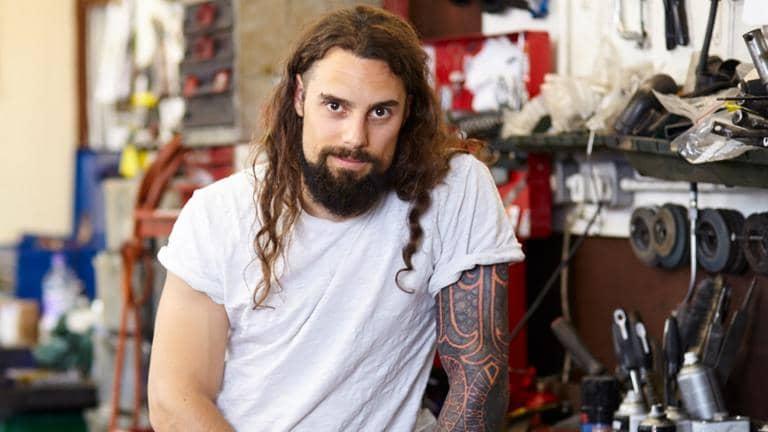
The Barclays app
Join 10 million Barclays customers using our app3
Use your phone or tablet to manage your accounts, send money and earn rewards

What’s your real relationship with money? Find out today with the Barclays app
How well do you really know your financial self? The chances are, unless you’ve taken time to examine the details of your everyday spending behaviours, the answer is ‘not as well as you could’.
Now is the time to change that. Using insights from the Barclays app you can explore the true nature of your relationship with money. Take a journey of financial self-discovery today in seven simple steps, guided by the expertise of Dr Peter Brooks, our chief behavioural scientist.
Step 1: Open your mind (and the Barclays app)
The first step on your journey to self-discovery starts with seeing things in a new light.
Take our app – yes, it’s primarily a tool for managing your money better. Also, with the right mindset, it can be used to reveal your financial behaviours. And these may tell a different story about your relationship with money to the one you tell yourself.
“We often view ourselves as the type of spender, saver, or financially-responsible adult that we want to be,” explains Dr Brooks. “And it becomes fairly easy to make up a version in our minds that isn’t necessarily true. But the app can help us remain objective.”
So, if you haven’t yet got the app1, head over to the Google Play Store (Android) or the App Store (iOS)2 and download it. Then open your mind to the possibility that you could get to know yourself a little better.
Step 2: Find your balance
Tracking how your balance changes is critical to understanding your relationship with money. By using the ‘track your balance’ function in the Barclays app, you can go much further and see how your spending changes over time. This feature lets you compare your balance month-on-month, using simple line graphs to show which days are costing you more than others, letting you track progress towards financial goals and make better decisions on everyday spend.
Even just considering how checking makes you feel can be revealing.
“We mentally account for our lives in different ways,” explains Dr Brooks. “Some people will be all over their balance on an almost daily basis – stopping them from dealing with more important things in their lives. While others will ignore what’s in their account and take out a sum of cash to spend over a period of time.”
Whichever you are, with more contactless or online payments, it’s a good idea to keep track of your balance and expenses.
Step 3: Understand the flow
When it comes to understanding your financial behaviours, knowledge is power. And our app puts loads of handy spending insights in the palm of your hand.
By providing a clear view of how your spending changes on a weekly, monthly, and annual basis – which you can toggle between in the app – you can see exactly where your earnings go. Merchants and categories are automatically picked up by the app to show you how you spend, which may be helpful in indentifying saving opportunities.
“In a world where online shopping is so easy, these features are actually really valuable to understanding how money flows around you,” says Dr Brooks. “I might think I only spend a few pounds a day on a sandwich for lunch. But when I start to use the insights feature, I may get the sense I spend a lot more than that over the course of the month.”
Step 4: Delve deeper
To get a true understanding of our financial behaviours, sometimes we need to examine how much we’re spending on specific areas of our life. And the spend categorisation feature on the app lets you do just that.
Whether you’re reviewing utility bills, gym fees, or comparing supermarket expenses, it’s easy to see how much each category is individually costing you in the long run. The app does this automatically, listing and ordering your transactions as you go.
You can go deeper if you want to look at how collective purchases add up, or keep it big-picture, and assess whether the areas you’re spending are bringing you enough value.
“By looking at your spend categorisation, you can start to question what you’re getting value from,” says Dr Brooks. “The function gives you the ability to examine your own behaviours with a less emotional mindset, so you can modify what you’re doing on a day-to-day basis to improve your financial position.”
Step 5: Discover what makes you happy
How we spend our money can be massively revealing. Not only does it show what matters most to us, but also where matters most to us.
The top merchant spend feature in the app offers a comprehensive, ranked list of where you spend the most. With insights about where or who wins your loyalty, you can start to look at which products, places and experiences bring you the most happiness and why.
And once you have a clearer sense of where your money goes, and what those purchases bring to your life, you might be in a better position to make those places work a little bit for you.
“Knowing where you spend the most may lead you to investigate whether a particular merchant has a loyalty scheme or a way to get a little bit of cash off regular purchases,” says Dr Brooks. “This will make that spend a little bit more efficient, but also add to the happiness it brings.”
Step 6: See into the future
Are you the kind of person who plans ahead with potential costs in mind? Or are you someone who lives in the moment? Whatever the answer, financial foresight leads to better budgeting.
When you know exactly how much of your monthly earnings are going towards living costs and utilities, it’s easier to see the whole picture. With the app’s calendar view, all your direct debits are diarised, so you have a clear picture of when your bills and regular payments are due over the next 30 days. This is great for budget tracking, and helps you save, too.
“The calendar view lets you spend with confidence because you can see what’s going to happen, or it can help you know what you can save,” explains Dr Brooks.
“This feature is great for building financial resilience – to make spending something that comes after saving. By looking ahead you can save close to payday, as opposed to at the end of the month. Put that money away before you're tempted to spend it.”
Step 7: Get that all-seeing feeling
Any journey of self-discovery relies on being able to see the bigger picture. With Open Banking, you can view your accounts from different providers in the Barclays app. So you can easily move money between them in just a few taps.
With the app, not only can you uncover your financial behaviours, but you also have the ability to easily change them for the better.
“If you've got money in a few different places, it's easy to overlook what each account is doing and whether you’re building towards good behaviours,” says Dr Brooks. “Seeing everything in one place is really helpful when it comes to staying in control.”
With that all-seeing feeling, you can start making your money work harder and have a better understanding of your true financial self.
Join 10 million Barclays customers using our app3
Use your phone or tablet to manage your accounts, send money and earn rewards
Open Banking allows you to share your financial data with providers regulated by the Financial Conduct Authority (FCA) and pay directly from your account.

Simple ways to manage your money
From tracking how much you’re spending to saving for the future, we’ve got the tools, support and guidance to make managing your money easy.
